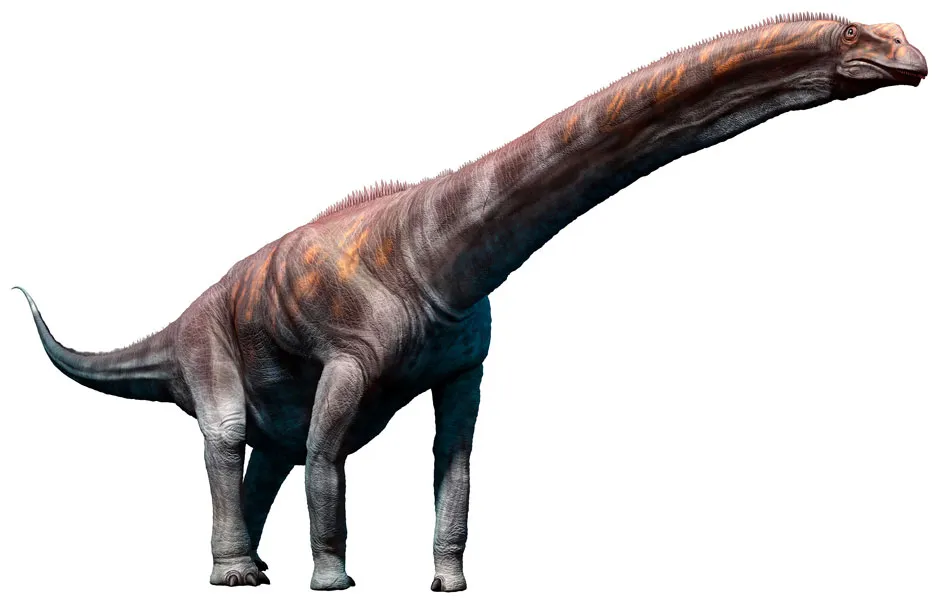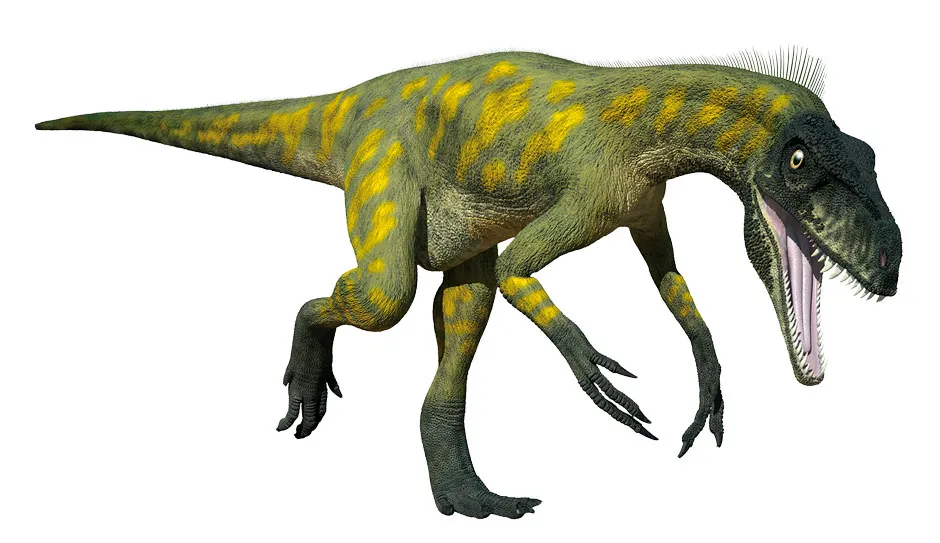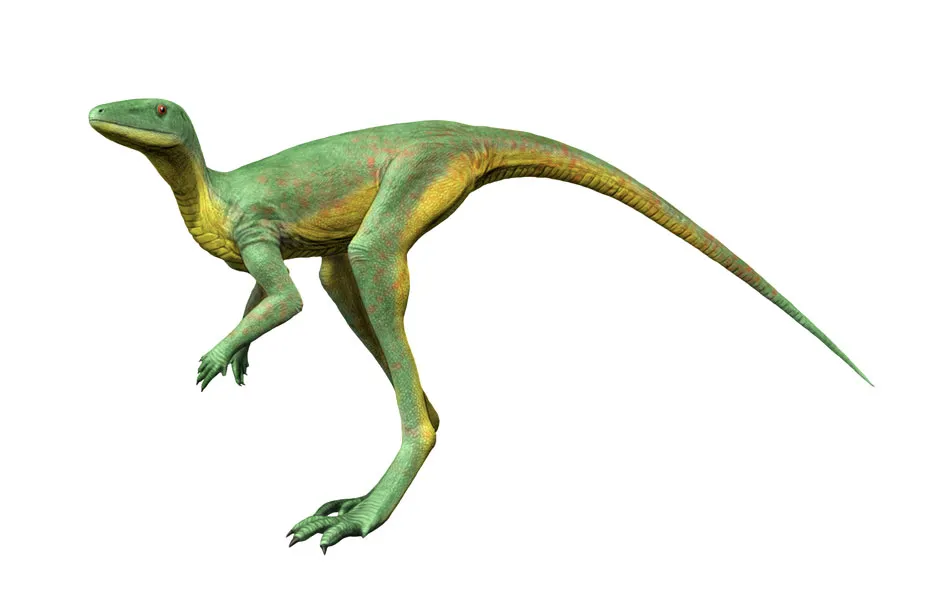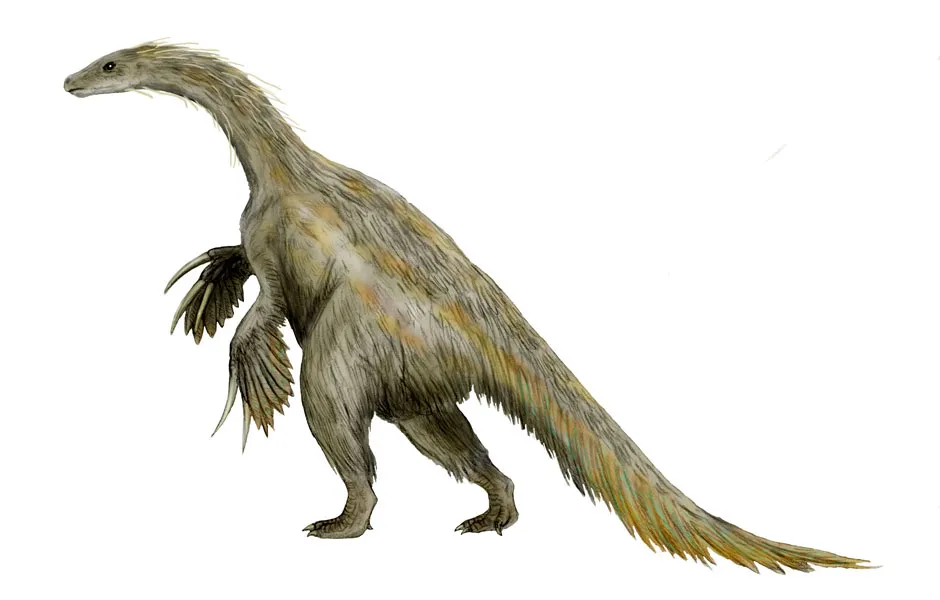Dinosaurs: understandably you may have questions. Questions like ‘just how formidable was the Tyrannosaurus Rex?’, ‘what was the largest dinosaur of them all?’, and ‘why does the pot-bellied Nothronychus look that weird?'.
Fortunately, palaeontologists have these answers – they’ve uncovered much about this intriguing group of reptiles that roamed the Earth 230 - 66 million years ago.
From the meteor that made them extinct, to what they may have looked like (feathers and all), below you can learn everything worth knowing about dinosaurs from our top experts. You can also find the latest dino discoveries, such as the Scottish fossils recently identified as Scleromochlus, a flightless, cat-sized early ancestor to the winged pterosaurs.
And if you want to dig even deeper, make sure to also check out our in-depth guide to the iconic Stegosaurus, the mighty Triceratops and the scary truth about Velociraptors. Spoiler: there’s a lot Jurassic Park got wrong.
The latest Dinosaur discoveries and news
With their teeny arm span, we can only imagine how annoying a back itch must have been for a T. Rex. But a recently discovered dinosaur may have suffered from the same plight. At least, that’s what we can guess from its fossils.
While its skeleton was a gigantic 11 metres long and weighing more than four tonnes, the newly named Meraxes gigas also wielded two disproportionally small forelimbs.
Interestingly, the Meraxes became extinct some 20 million years before the T. Rex. While very distantly related, the two species evolved their tiny arms separately for a survival advantage. What advantage exactly? Researchers aren’t sure, but some scientists have theorised the tiny limbs could help with non-predatory activities, like supporting movement or holding during mating.

Elsewhere, scientists have also discovered how dinosaurs came to dominate Earth in the first place. New evidence, based on recent excavations in the remote desert of northwest China’s Junggar Basin, indicates that freezing temperatures caused by repeated volcanic winters may have led to the dinosaurs’ initial success.
How? Well, the warm blood and feathery insulation of these early dinosaurs may have helped them survive the cold that killed off the planet’s early dominant reptiles.
“Severe wintry episodes during volcanic eruptions may have brought freezing temperatures to the tropics, which is where many of the extinctions of big, naked, unfeathered vertebrates seem to have occurred,” explained study co-author DrDennis Kent, a geologist based at Lamont-Doherty.
“Whereas our fine feathered friends acclimated to colder temperatures in higher latitudes did OK.”
What killed the dinosaurs? When did they go extinct?

It’s believed dinosaurs were killed off by an asteroid. Although some scientists theorised a flurry of volcanic activity wiped out the reptiles, research now points to a major impact off the coast of modern-day Mexico about 66 million years ago.
Just how big was the asteroid that killed the dinosaurs? The impact left behind a crater off the coast of Mexico’s Yucatan Peninsula that measures 150km across and 20km deep. It is thought to have triggered tsunamis, earthquakes and volcanic eruptions that not only led to the demise of the dinosaurs but to almost three-quarters of all plant and animal life on Earth.
After blasting into the Earth, scientists say the asteroid would have released particles and gases, which blocked out the Sun and caused a lengthy winter. While this caused the extinction of many dinosaurs, many species that later evolved into birds survived.
In a 2021 study, researchers at Harvard University claimed that the Chicxulub comet may have originated from the Oort cloud, an extended shell of icy debris located at the edge of the Solar System.
Read more:
- If the dinosaurs didn’t go extinct, could they have developed a civilised society?
- What would dinosaurs have tasted like?
When did dinosaurs live?
Most dinosaurs lived in what’s called the Mesozoic Era, a time roughly 245 to 66 million years ago. Scientists generally divide this period into three separate ages:
- Triassic Period (252 to 201 million years ago) The era when reptiles first evolved into creatures we know as dinosaurs. However, the Earth they lived on was different from today's. Almost all animals lived on Earth’s one extremely hot and dry landmass, Pangaea.
- Jurassic Period (201 to 145 million years ago) In this period, temperatures on Earth fell, leading to more water, plants and dinosaurs. It’s in time period species such as the Brachiosaurus first emerged.
- Cretaceous Period (145 to 66 million years ago) With more continents forming around the globe, more dinosaurs started evolving independently, which led to more dino diversity. Despite what a certain Jeff Goldblum movie might suggest, the Tyrannosaurus Rex and Velociraptor first actually appeared in this Cretaceous Period, not the Jurassic.
What was the biggest ever dinosaur?

With a length between 30 to 40 metres, the Argentinosaurus was the world’s largest dinosaur. It may have weighed up to a staggering 80 tonnes, about the equivalent of 53 adult hippos (or 20,000 cats. Now that's a fight we’d love to see).
However, there are animals alive today even heavier. Namely, the blue whale, which can weigh a staggering 150 tonnes.
Why were dinosaurs so big?
We don’t yet know why the dinosaurs survived the end-Triassic extinction while crocs were almost wiped out, reduced to a few lineages that produced today’s alligators and crocodiles. What we do know is that in the ensuing Jurassic Period the dinosaurs spread around the world and got much larger.
The sauropod dinosaurs like Brontosaurus, Diplodocus and Brachiosaurus were the heavyweights of the time. These were the largest animals to ever live on land, some of them exceeding 80 tonnes in mass – more than the take-off weight of a Boeing 737.
Why were they able to get so big? Their ultra-efficient lungs were probably key. These bird-style lungs were connected to air sacs, which stored extra oxygen-rich air, allowing these dinosaurs to take in more oxygen per breath than a mammal like us. – Professor Steve Brusatte
Read more:
What were the first dinosaurs like?

Dinosaurs evolved in the Triassic, which began around 252 million years ago, after the most severe mass extinction in Earth’s history. Massive volcanic eruptions in Siberia led to runaway global warming, which killed up to 95 per cent of all species. Among the survivors were small, cat-sized reptiles that could run fast.
These dinosauromorphs were the ancestors of dinosaurs. Around 230 million years ago, they gave rise to true dinosaurs, which are distinguished by their upright legs that fit into a window-like opening in the pelvis, which is attached to the backbone by extra vertebrae. These features allowed the first dinosaurs – like Eoraptor and Herrerasaurus – to run faster, cover larger distances, and expend less energy than most other animals of the time.
These first dinosaurs diversified and split into the three fundamental divisions of the dinosaur family tree: the carnivorous theropods, long-necked sauropods, and beaked, plant-munching ornithischians. – SB
What came before dinosaurs?

No, not aliens. The answer to what dinosaurs evolved from is simple: more reptiles – just ones a lot smaller than a T-Rex. Known as dinosauromorphs, they were the size of house cats and flourished around 242 to 244 million years ago.
They were animals by no means at the top of the food chain, but they were speedy enough to outpace most attackers.
How did the earliest dinosaurs beat their rivals?
The first dinosaurs didn’t take over the world right away. Rather, it took them more than 30 million years to assert their dominance. They were evolving in a world very different from today, as all land was joined into the supercontinent Pangea, which stretched from pole to pole.
Sharing this landmass were early crocodiles and their relatives, which were the main competitors of the early dinosaurs. For most of the Triassic, the crocs were pulling ahead of the dinosaurs: there were more species of them, they had a greater richness of body sizes, diets and behaviours, and they lived across a broader range of Pangea.
But just when it looked like the crocs were poised to defeat the dinosaurs, Pangea began to split, around 200 million years ago. Volcanoes erupted with gusto, spewing out greenhouse gases, causing global warming and another mass extinction. The crocs were decimated, but the dinosaurs survived nearly unscathed. – SB
How successful were the dinosaurs?
By every objective measure, dinosaurs were hugely successful. During much of the Mesozoic Era (252-66 million years ago), they dominated ecosystems on land, living in every conceivable environment from the poles to the equator, and from the seashore to the river valleys to the deep mountains.
They diversified into thousands of species, ranging in size from feisty carnivores like Microraptor (about the size of a crow) to behemoth plant-eaters like Brontosaurus, with the heft of a jet aeroplane. Some were specialised runners, others diggers, and some even glided and flew.

Some species were covered in armour and spikes, others had endless varieties of horns and crests for display, many lived in groups and had big brains and keen senses, and it seems like many dinosaurs – if not all of them – were covered in some type of feather. Indeed, today’s birds evolved from dinosaurs, meaning that 10,000-plus species live on, continuing dinosaur success to the present day. –SB
When were dinosaurs discovered?
The short answer: in 1842, when British scientist Richard Owen coined the term Dinosauria, literally meaning “terrible lizard” in Greek. Owen is often credited as the first person to place dinosaur in their own category of creature after examining a particularly large dino bone.
However, Owen is by no means the first to find dinosaur remains. For instance, many were unearthed in ancient China, but were treated as dragon bones.
Many historians have also noted how many dinosaur bones in Europe were believed to be the remains of biblical creatures. Even as late as 1763, British physician Richard Brookes believed a broken dinosaur femur was actually a fossilised giant's testicle.
How do we know what dinosaurs looked like?

Scientists can estimate the appearance of dinosaurs with some very clever detective work. Not only can experts piece together the size of these creatures from their remains, but tiny details on each bone can offer big clues.
For instance, many fossilised bones have tiny scars that indicate how dinosaur muscles connected to their bones, also illuminating how they moved. In recent years, palaeontologists have also used 3D computer modelling to test exactly how dinosaurs could have moved, and thus looked.
For a full explainer, you can read our full guide to how we know what dinosaurs looked like.
How did dinosaurs learn how to fly?
Not all dinosaurs were enormous. One group, the paravian theropods, went in the opposite direction. Like most dinosaurs, the first paravians sported simple, hair-like feathers, which probably helped to keep them warm.
As the paravians got smaller over time, the feathers on their bodies became larger and more packed together. Then they began to line up their feathers on their arms, to form wings. These first wings were too small to keep these dinosaurs aloft; instead, they were probably used for display.
At some point, though, a threshold was crossed. The wings became big enough that, when flapped, they could provide a bit of lift and thrust, and keep these paravians airborne. Flight had evolved! From these flapping ancestors arose today’s birds.
In other words, birds are dinosaurs! So while Triceratops, T. rex and the other famous dinosaurs went extinct 66 million years ago, some dinosaurs live on. – SB
Read more about dinosaurs:
- Why aren’t pterosaurs classed as dinosaurs?
- Would the dinosaurs have eaten us if we were alive at the same time?
Could we bring dinosaurs back to life, like in Jurassic Park?
Sorry if it’s you reading, Jeff Goldblum, but probably not. To go full Jurassic Park, you’d need a source of well-preserved dinosaur DNA, something that researchers have yet to find. And it’s doubtful they ever will: DNA breaks down over time, with it unlikely to be found in fossils over a million years old.
Considering dinosaurs went extinct 65 million years ago, there’s little hope dinosaur life, uh, finds a way back to us.
However, other extinct species – including an Australian amphibian called the gastric-brooding frog – have been ‘de-extincted’ using ancient DNA.
Read more:
- Jurassic Park: five things we now know about dinosaurs 25 years on
- Jurassic World: Could we live alongside dinosaurs?
About our expert, Prof Steve Brusatte
Prof Steve Brusatte is a vertebrate palaeontologist and evolutionary biologist who specialises in the anatomy, genealogy, and evolution of dinosaurs and other fossil organisms. He has written over 110 scientific papers, published six books (including the adult popular science book The Rise and Fall of the Dinosaurs, the textbook Dinosaur Paleobiology, and the coffee table book Dinosaurs), and has described over 15 new species of fossil animals.